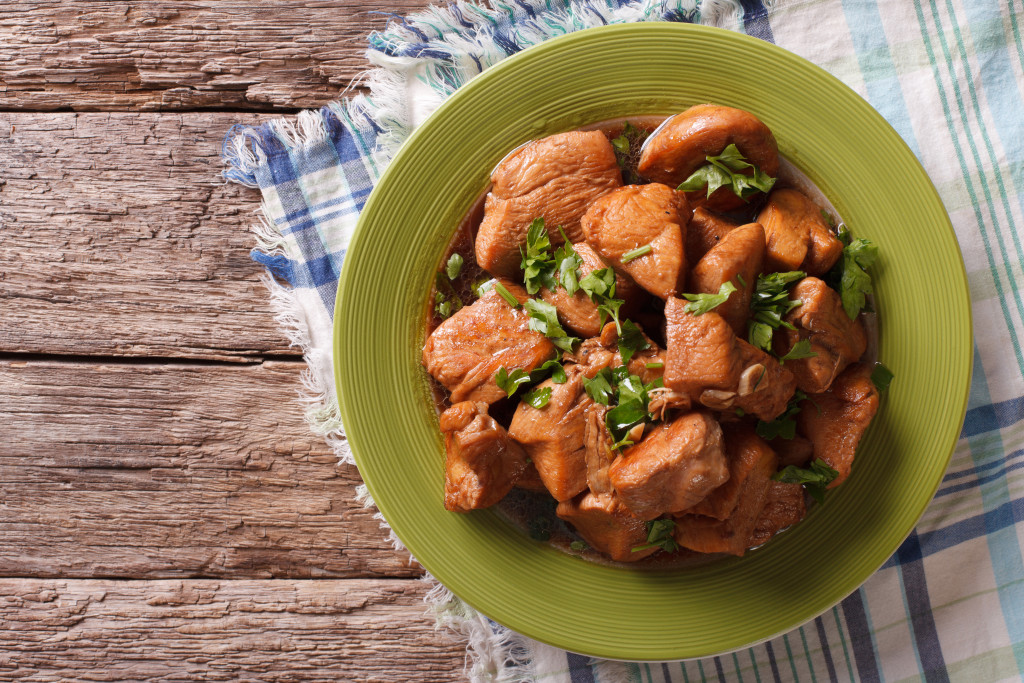Filipino food does not get the same recognition as other Asian dishes. Most of the time, Thai and Vietnamese cuisines are more revered on the international stage.
However, things seem to be changing. In the past decade, more attention has been given to the Philippines’s unique, often misunderstood dishes. There is more to Filipino foods than just balut, the duck embryo eaten directly from the shell.
What is so Special About Filipino Food?
Years ago, Andrew Zimmern, host of the show “Bizarre Foods” on the Travel Channel, made a bold prediction. He said Filipino food would be “the next big thing,” and everyone will be talking about it.
Zimmern explained that part of its charm is its influences. Filipino cuisine is inspired by neighboring countries in Southeast Asia; Spain, the United States, and Japan — three countries that colonized the Philippines; and China, which has been trading in the islands for centuries.
You will see the influence of Chinese food in the use of noodles, rice, and soy sauce. The famed lumpia is reminiscent of Chinese spring rolls. Meanwhile, Filipino dishes find similarities with Malaysian and Indonesian food with how coconut milk, chilies, and, of course, rice are added.
You will also find Spanish-sounding dishes like flan and the famous adobo, the method in which meat is braised in sauce composed of various ingredients such as garlic, oregano, salt, and vinegar.
So, Zimmern said, if you like Chinese, Thai, Vietnamese, Japanese, Spanish food, you likely will also enjoy Filipino cuisine.
The Filipino Food Take Over

His prediction seems to be correct. Since 2012, Google searches for “Filipino food” have increased, and many people are looking for “lumpia near me.” In 2016, the magazine Bon Appetit placed Washington, D.C.- based Filipino restaurant Bad Saint in its annual list America’s Best New Restaurants.
Part of the reason behind the rising popularity of food from the Philippines is visibility and accessibility. Seeing Filipino food talked about in American media likely roused curiosity. Moreover, there has been an increasing number of restaurants serving Filipino dishes across the U.S.
There is Jeepney and Purple Yam in New York, Full House BBQ in Las Vegas, Lasita (formerly Lasa) in Los Angeles, and a lot more.
Then, there is Jollibee, the most popular Filipino fast food, which has been opening stores around the world. In the U.S. alone, there are 23 branches, many of which are in California. Jollibee Foods Corporation said that it plans to expand to 300 more locations across North America by 2024.
It is not just Filipinos who are lining up to buy fried chicken and hamburgers. Americans, too, have been dazzled by the ridiculously jolly bee.
In addition, it is easier now to find ingredients for Filipino cuisines. Seafood City, a supermarket chain, carries many brands such as Mama Sita’s and Del Monte. Other Asian grocers such as H-Mart and Great Wall Supermarket also offer ingredients from the Philippines.
Anyone curious to try to make the notoriously sweet Filipino spaghetti, which children adore, at home can buy Del Monte pasta sauce in the U.S.
The Philippines is already exporting various products to the world. Its mangoes, coconut, bananas, pineapples, chocolates, and sugar arrive in different countries, including the U.S.
And, thanks to the internet, recipes for popular Filipino foods are more accessible. One does not have to have a “lola” or a “nanay” to learn how to make adobo, sinigang, kare-kare, sisig, or halo-halo. It helps to have Filipino roots; every family has their own recipes depending on which region of the Philippines they come from.
Adapting to Different Tastes
Filipino food can be intimidating to those unused to the flavors and the scents, but the beauty of the cuisine is its adaptability. Dishes do not come out of the kitchen ready to be eaten. Diners are given the liberty to add flavor to the dishes. There is bagoong, or fermented shrimp paste, or patis, which is fish sauce, for saltiness. For a dash of sourness, add vinegar. Eateries in the Philippines will also serve kalamansi, a small citrus fruit called Philippine lime, and sili, or chili, for more flavor.
Many restaurants in the U.S. have also adapted Filipino food for the American palette. Filipino-American chefs have experimented with the cuisine and created their own unique takes.
Filipino food is still largely unknown in the U.S. However, there has been increasing interest in cuisine around the world. It can one day become as popular as Thai, Vietnamese, Chinese, Japanese, and South Korean food.






